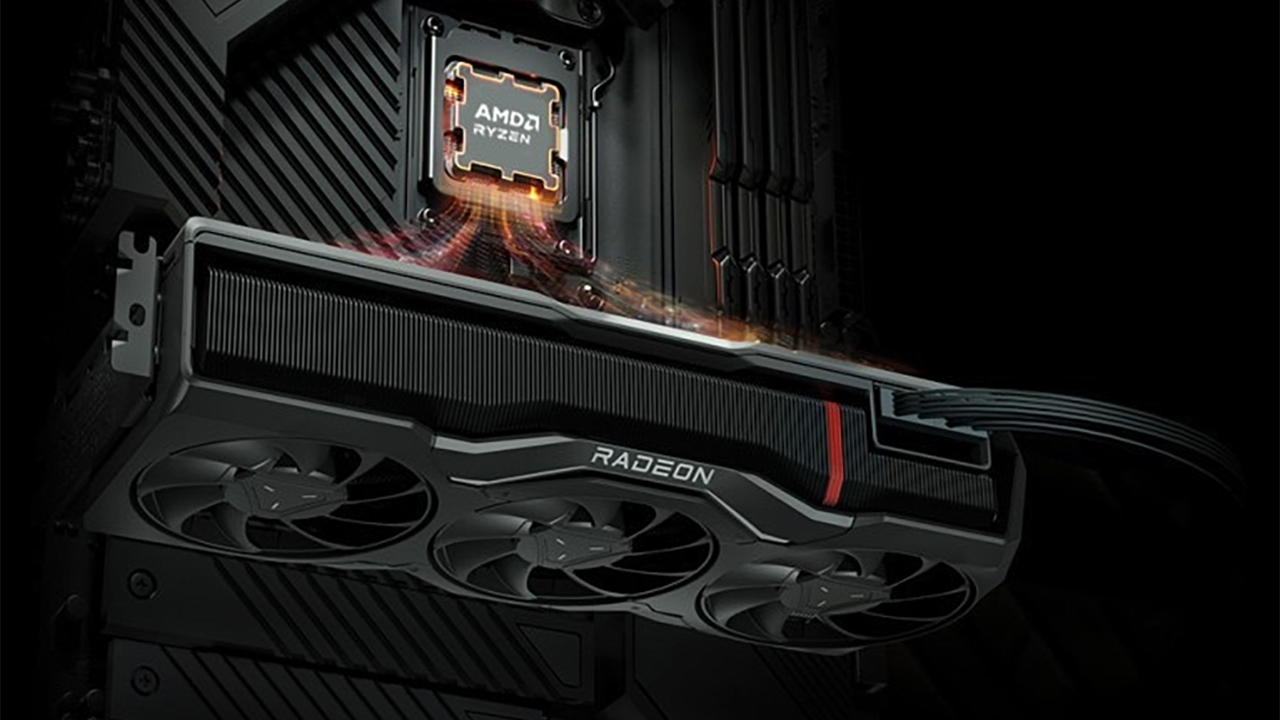
AMD has added another RDNA 4 GPU die name to its ROCm software suite. Discovered by @Kepler_L2 on X (Twitter), the new Navi 44 die could be an entry-level GPU die in AMD's upcoming RX 8000-series lineup. Or it could be something else entirely, as AMD currently isn't saying much about its next-generation chips. Either way, these will eventually compete with the best graphics cards for gamers' dollars.
This is the second RDNA 4 GPU that AMD has added to the ROCm list for hardware enablement, the first being the Navi 48 die sporting the Gfx1201 moniker — Navi 44 boasts a Gfx1200 moniker. And that represents a bit of an oddity in naming conventions.
The presence of these GPUs in the ROCm support list at least suggests AMD is nearing completion of at least some of the upcoming RDNA 4 GPUs. But so far, the most interesting tidbit is the change in AMD's GPU die naming scheme. For the past several GPU generations, AMD has almost always produced new GPUs without skipping any numbers in the codename. For instants, RDNA 3 boasts three dies consisting of Navi 31, 32, and 33. Before that, RDNA 2 offered up Navi 21, 22, 23, and 24.
We have to go back to 2019's original RDNA with Navi 10 and Navi 14 to find a break in that pattern, but even then there are changes from established AMD GPU history. For example, Vega 10 and Vega 20 preceded the current RDNA families, with Polaris 10, 11, 12, 20, and 21 GPUs filling out the budget to midrange sector. So what's going on here?
https://t.co/gQ9ziqNavw pic.twitter.com/Jgk2sZ3LZFMay 23, 2024
AMD appears to be skipping most of the normal "beginning" numbers, jumping straight to Navi 48 and now Navi 44 now. This is a completely new naming philosophy that makes educated guesses on GPU specs virtually impossible. There are rumblings that AMD will focus on mainstream graphics cards for RDNA 4, meaning we might not have a direct successor to the RX 7900 XTX and its Navi 31 GPU — at least not initially.
Numerically, Navi 44 may appears to be the successor to Navi 24, but that was an entry-level die in the RX 6000-series initially intended for laptops only. It was adapted for desktop GPUs in the form of the RX 6500 XT, RX 6400, RX 6300, and Pro W6300, but it lacked many of the features found in other RDNA 2 GPUs.
Because of this, we wouldn't expect AMD to follow the same path with Navi 44. At the very least, we'd expect Navi 44 to be more like a sequel to the current mainstream Navi 33 that powers the RX 7600 and RX 7600 XT. Except if that's correct, then what does Navi 48 bring to the table?
AMD's codenames appear to be changing, and that implies the RX 8000-series graphics cards could be a break from the pattern we've seen with the past two RDNA families — RX 6000- and RX 7000-series GPUs. AMD is largely expected to ignore the high-end / extreme GPU segment with the RX 8000-series, instead opting to go with a GPU lineup resembling the RX 5000-series that only consisted of entry-level and midrange options.
That could make a lot of sense. AMD GPUs aren't exactly taking the world by storm of late, if the Steam Hardware Survey is any indication. AMD has hemorrhaged revenue from gaming sales as well, where it lost 48% of its revenue year over year. That's almost a billion dollars difference compared to Q1 of 2023. The biggest number of GPU sales for AMD currently come from integrated solutions, plus the PS5 and Xbox consoles. It's even feasible that Navi 44 and/or 48 could be codenames for an iGPU, though that's unlikely.
Regardless, with the company losing so much money in its gaming division, why bother building ultra-high-end GPUs? But that could be a mistake, as it simply leaves Nvidia uncontested in the high-end and above markets. Not to mention, there are rumors that Intel Battlemage will take a similar tactic and target mainstream gamers — which will almost certainly mean taking market share more from AMD than Nvidia.
Like other GPU companies, AMD is undoubtedly more concerned with increasing AI GPU sales for the time being. Those potentially make much more money, and there's a huge demand for anything AI-related. AMD's MI200 and MI300 CDNA families also power some major supercomputers, Frontier and the upcoming El Capitan, respectively. Will supercomputer and AI sales be enough to continue funding AI GPU development? That remains to be seen. Speaking of which, the ROCm patch notes also seem to have added a new MI300 variant dubbed MI300X1 ("gfx942"), though it's unclear how this chip differs from the existing MI300X.







